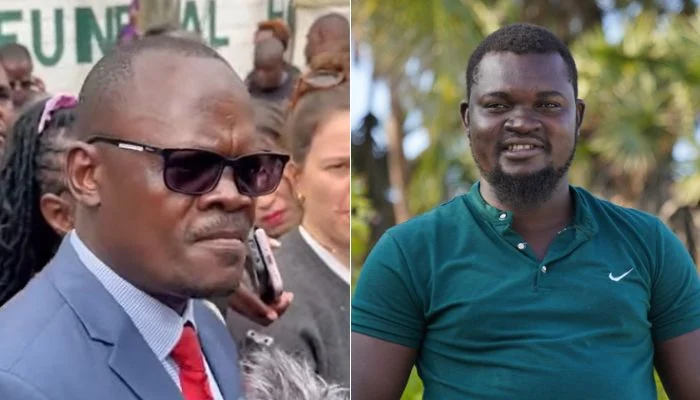Fresh questions have emerged around the controversial death of influencer Albert Ojwang, after his family’s lawyer described graphic injuries observed on the late 27-year-old’s body—casting further doubt on the official police narrative.
Speaking to reporters on Monday after viewing Ojwang's remains, the lawyer painted a harrowing picture of what he saw at Nairobi Funeral Home (formerly City Mortuary). According to him, Ojwang bore visible trauma to the head, upper limbs, and shoulders, with blood reportedly oozing from his nose.
“The body had significant injuries on the head, hand, and shoulder. His head was visibly swollen, and there was blood coming from his nose,” the lawyer revealed.
These findings sharply contradict earlier claims by police that Ojwang sustained fatal injuries by hitting his head on a wall inside his holding cell.
Mounting Contradictions in Police Statements
When news of Ojwang’s death broke on Sunday, officers initially claimed the influencer had inflicted injuries upon himself, leading to his collapse inside a cell at Central Police Station in Nairobi.
However, the presence of multiple wounds—particularly on his hands and shoulders—has led to growing speculation that he may have fought back against an assault, pointing to potential defensive injuries.
Even the police account has shifted. Inspector General Douglas Kanja, while addressing media at the same station, walked back earlier claims, stating instead that Ojwang was simply “found unconscious” and later declared dead at Mbagathi Hospital.
Arrest Tied to Defamation Complaint by Deputy IG
As pressure mounts for transparency, IG Kanja also confirmed that Deputy Inspector General of Police Eliud Lagat had filed a complaint against Ojwang for allegedly defaming him on social media—a move that led to the influencer’s arrest in Homa Bay County.
“There was a formal complaint filed by the Deputy IG. That is why Ojwang was arrested,” Kanja said, adding that there was no mistreatment and that every citizen, including high-ranking officials, has a right to file a complaint.
Despite these assertions, public trust in the police account continues to wane, particularly after details of the alleged injuries surfaced.
Public Outrage Boils Over at City Mortuary
Emotions flared outside Nairobi Funeral Home, where a crowd of protesters gathered to demand answers over Ojwang’s sudden and suspicious death.
Chanting slogans, many called for the resignation of President William Ruto and DIG Eliud Lagat, whom they directly linked to the events that led to Ojwang’s final hours. Protesters demanded access to the body and greater transparency from police, holding up placards and capturing the standoff on their smartphones.
The demonstration reflected a broader distrust in the justice system and echoed the frustrations of Kenyans demanding accountability over police excesses.
What Comes Next?
The Independent Policing Oversight Authority (IPOA) has launched a formal investigation and visited the station on Sunday. IPOA Chairperson Ahmed Issack Hassan has pledged a thorough and independent probe into Ojwang’s death.
As Ojwang's story captures national attention, the focus now turns to whether justice will be served in a case that is increasingly viewed as a litmus test for police accountability in Kenya.

